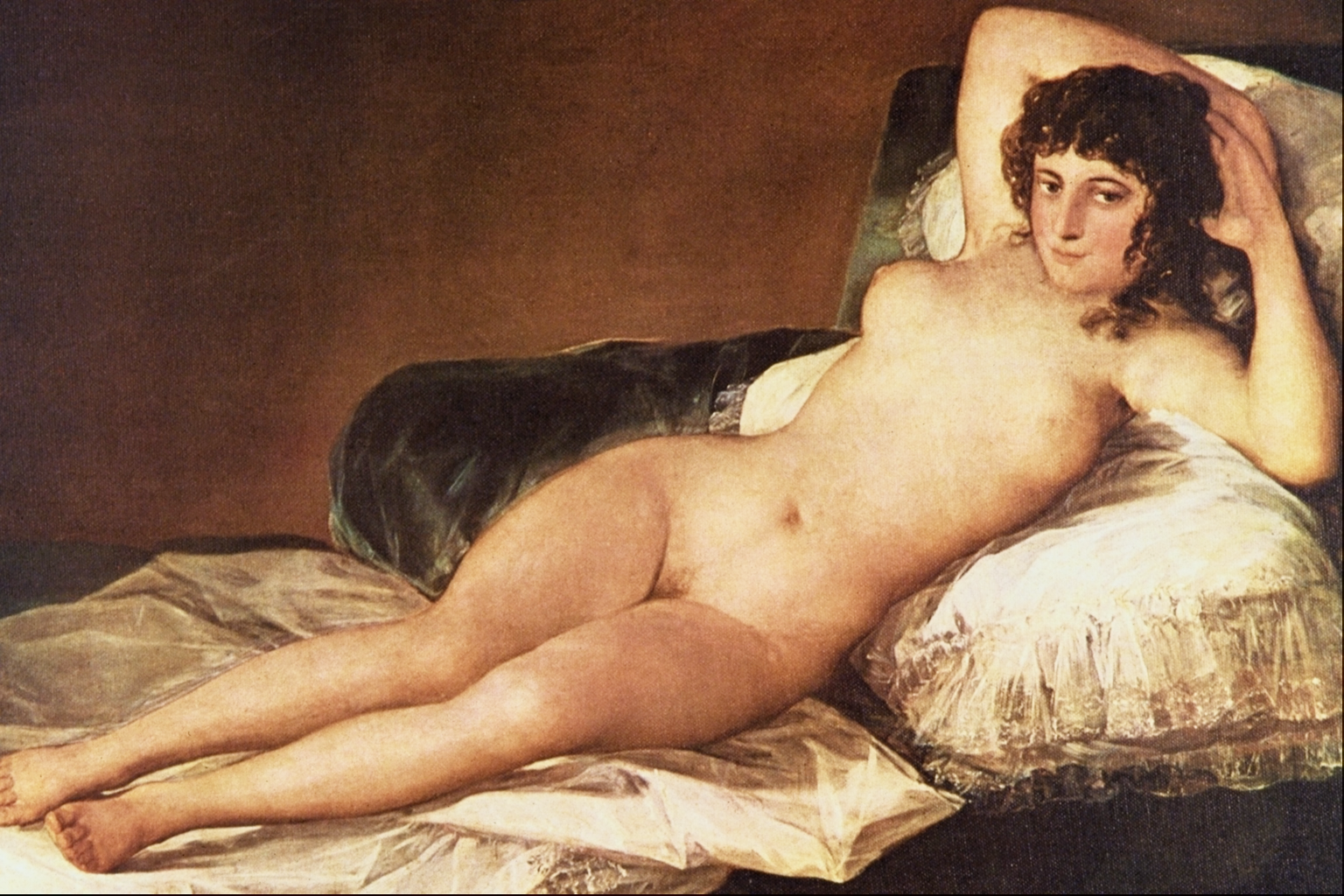Goya: Images of Women was the first major exhibition dedicated to an examination of the representation of women by Francisco Goya y Lucientes (1746-1828), one of Spain's most celebrated painters and an internationally influential printmaker of the late 18th and early 19th centuries. His imagery of the multifaceted world of women is unmatched by any artist of his time--and perhaps of any time.
On view in the National Gallery of Art's West Building from March 10 through June 2, 2002, the exhibition presented 115 paintings, drawings, prints, tapestry cartoons, and tapestries--some of which have never traveled to the U.S.--that span the artist's career from his arrival at the court of Madrid to his last years in Bordeaux.
The exhibition was organized by the Fundación Amigos del Museo del Prado, on the occasion of their 20th anniversary; the Museo Nacional del Prado, Madrid, where it was on view October 30, 2001 through February 9, 2002; and the National Gallery of Art, Washington.
The exhibition, organized in seven thematic categories, paralleled the chronology of the artist's career. Drawn primarily from the collections of the Museo Nacional del Prado, the Patrimonio Nacional, Madrid, and the National Gallery of Art, and drawing as well on major loans from American and European collections, the works in the exhibition are placed within their historical context and mirror Spanish society of the late 18th and early 19th centuries.
Tapestries and Tapestry Cartoons (1775-1800):
New to the court in 1775, the 29-year-old Goya delivered to the Royal Tapestry Factory of Santa Bárbara in Madrid his first full-scale designs for tapestries to decorate the private chambers of the royal palaces of the Pardo and the Escorial. These early works introduced him to the Crown Prince and Princess Carlos and María Luisa, the future king and queen of Spain, who would become his most important patrons. Between 1775 and 1792, Goya painted more than 60 tapestry cartoons, which represent female types and characters popularized in contemporary plays and popular literature. The exhibition opens with nine tapestry cartoons (oil paintings that measure the same size of the tapestries to be woven after them) along with six exquisite silk and wool tapestries, including The Parasol (1777) and The Straw Mannikin (1791-1792).
Aristocratic Patrons and Portraiture (1783-1790):
In 1780, as a result of financial constraints engendered by Spain's war with England, production of tapestries was suspended, and Goya turned to other work, mainly religious commissions and portraiture. His first known female patron, and the subject of two portraits in the exhibition, was María Teresa de Vallabriga y Rozas, an Aragonese noblewoman who married Don Luis, the brother of Charles III. She also provides the focus of the masterful portrait of The Family of the Infante Don Luis (1784), was exhibited here for the first time in the United States. This was the first of many major portrait commissions that Goya received from the Spanish aristocracy, including María Josefa de la Soledad, Duchess of Osuna, Countess of Benavente (1785) and Family of the Duke and Duchess of Osuna (1787-1788).
Gentlemen's Paintings 1780s-c. 1805):

Included in the exhibition were Goya's images of reclining or sleeping women, presumably painted for male patrons. The most famous of these "gentlemen's paintings" are the Naked Maja (Maja desnuda) (1797-1800)

and the Clothed Maja (Maja vestida) (1800-1805), which formed the centerpieces of the exhibition.
The Caprichos and Related Drawings (1795-1799):
The 80 aquatint etchings known as the Caprichos, published in early 1799 and probably executed over the preceding years, comprise Goya's best-known series of etchings. His use of the aquatint process marked a decisive breakthrough in the field of printmaking. These prints of whimsical subjects--in which women are alternatively targets of satire, sympathy, and admiration--serve, in conjunction with his portraits and genre scenes, as a vehicle to address gender issues in a changing Spanish society, as well as a means of social commentary on women's education, marriage, fashion, and prostitution.
Portraits (1795-1816):
By the early 1790s Goya had become Madrid's most sought-after portraitist, painting some of the most powerful women of the day. In addition to the early portraits painted during his appointment to the court, the exhibition also presenteed such later paintings as Thérèse-Louise de Sureda (c. 1803/1804), The Marchioness of Villafranca Painting Her Husband (1804), and Josefa Castilla Portugal de Garcini y Wanasbrok (1804), a work that exemplifies Goya's style at its most straightforward,

as well as two stunning portraits of the actress Antonia Zárate.
Later Prints and Drawings (1810-1820s):
This section of the exhibition included prints from The Disasters of War and The Disparates (loosely translated as "follies"), as well as a selection of Goya's private drawings. As uncommissioned works, these prints and rawings allowed Goya the freedom to explore subjects that would have been officially censored.
Genre Scenes Represented on Canvas and in Miniatures (1808-c. 1826):
Following an illness in 1792 that left him nearly deaf, Goya began to experiment with a wide variety of themes in uncommissioned works. These include such genre paintings as The Duchess of Alba and "La Beata" (1795) and its companion piece "La Beata" with Luis de Berganza and María Luisa de la Luz (1795)--scenes of daily life that Goya chose himself. The exhibition also included small works Goya painted on ivory including Monk Talking to an Old Woman (1824-1825) and A Maja and Celestina (1824-1825).
Organization, Curator, Catalogue
The exhibition was guest curated by Janis A. Tomlinson, a leading authority and scholar of Goya. An illustrated catalogue was pepared with contributions from leading Spanish and international scholars.